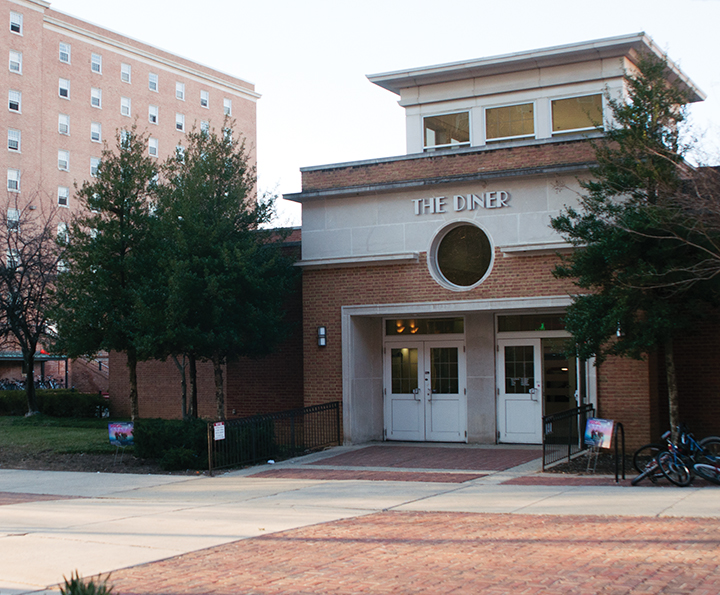Since the transition in fall 2016 from retail dining to Anytime Dining, a plan where students can eat an unlimited amount after swiping in rather than purchase items individually, Dining Services has been interested in measuring the effect the change has had on food waste, said Allison Tjaden, Dining Services assistant director.
Last week, students from the Environment, Technology and Economy Scholars program and Dining Services conducted an audit at campus dining facilities to gauge exactly how much food the diner is wasting. They used a clicker to keep track of how many students opted into the study and dropped off their plates at the table, recording 889 over the two days.
The total food wasted during their audit weighed 141.4 pounds, which is an average waste of about 2.5 ounces per student.
“That’s less than half a cup,” said Bart Hipple, Dining Services spokesman. “Less than half a cup of food waste per student is not bad, [but] of course you always want to work it down.”
[Read more: UMD’s transition to Anytime Dining has saved more than 6 million disposable products]
From April 20 to April 21, a group of ETE Scholars collected waste at the diner during two separate three-hour time slots, said Ciera Miller, a freshman environmental policy major.
The auditors set up a table in the diner near where students normally dispose food and gave them the option to take part in the study. If a student opted in, the auditors scraped food from his or her plate and split it into buckets according to five different categories: vegetables, fruits, carbs, protein and other, Miller said. Then they weighed the buckets and recorded the total waste from each category.
While collecting students’ food waste, ETE Scholars issued a survey to students asking them to explain their reason for wasting food on their plates. About 48 percent said the food did not taste how they expected and about 23 percent said there was too much food on their plates.

Hipple said that the data resulted from one of the positive aspects of Anytime Dining. Before Anytime Dining, when students had to pay for food by item, they were less likely to try new foods, he said.
“[Students] weren’t willing to try something if [they] didn’t know what it was,” Hipple said. “[Now], I think people are experimenting. They’re trying things they haven’t had before and that excites me.”
Carbs took the largest share of food waste on April 20, coming in at 37 percent of total waste. On April 21, proteins were the most wasted at about 30 percent.
The scholars found a lot of pasta waste during their audit, a dish that students self serve.
“Honestly, it surprised me looking at this,” Miller said. “There’s not that much food being wasted. It’s mainly carbs. People just take way more than they want with pasta and stuff like that, so portion control is a big thing. With the chicken station, there’s a server.”
Adding a food server at the pasta stations could potentially cut down on food waste, Miller added.
Allyson Convers, a sophomore accounting and information systems major, said changes to this year’s dining plan have already yielded positive results.
“They made the plates smaller, and that has definitely made me take less food,” Convers said. “Last year, I ran out of food because I was on the point system. Now that I know I can take what I want, I don’t worry about having to get a lot in that moment.”
[Read more: UMD Food Recovery Network chapter works to fight food waste]
ETE Scholars also noted which meals were wasted most, singling out pad Thai on Thursday and quesadillas Friday. Desserts were not wasted much either day.
The auditors also found students wasted about two napkins on average. Although it was not a planned part of the audit, the scholars performed an impromptu inventory of napkin waste after noticing it pile up. They pinpointed it as an issue that future food waste audits should measure more accurately.
Dining Services intends to use these findings as a benchmark to conduct more food waste audits in the fall. Until then, Tjaden said there are actions Dining Services can take now to cut down on waste, such as to better meet students’ food preferences and discouraging waste by advertising food waste goals.



